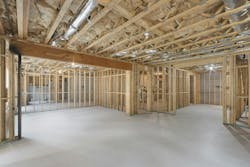How to Save Serious Money With Progressive Value Engineering
Every builder looks for efficiency and cost savings during the construction process. But what if you could double or triple your savings by spending more time and attention during design, pre-construction, and every single step of building the home?
We developed a process that we call “progressive value engineering” and we’re saving many thousands of dollars on every home by shortening our building cycle, reducing materials costs, and carefully tracking subcontractor payments.
Progressive value engineering also resonates with homebuyers. It shows them that we are good stewards of their dollars, and gives them confidence that we will deliver their home on time and on budget.
We begin with a 10-page architectural checklist to purposefully and thoughtfully design every square foot of the home with value in mind. While most architects are focused on design only, we work with architects to start value engineering at the earliest stage by creating efficient floor layouts, stacking walls, and finding ways to optimize expensive components like beams.
We also consider how the home is situated on the lot and the size and placement of windows to take advantage of shade trees, sun patterns, and the natural topography of the land. There are practical benefits as well, such as making sure that doors don’t awkwardly open into each other.
Once the design is finalized, we spend time analyzing the most efficient ways to construct the home while creating construction documents. Investing time at the front end allows us to find pockets of efficiency before the shovel ever touches the ground. If you don’t think about this until you get into the field, it’s too late.
We are relentless in hunting for ways to trim unnecessary costs without impacting quality or craftsmanship. For example, we make sure mechanical rooms are centrally located in the basement to eliminate long HVAC runs, which are costly and waste energy. If a home’s gas demand is on the cusp of needing an oversized gas line, we explore switching some systems like furnaces to top-of-the-line electric models to eliminate that cost.
We know the exact cost savings of our progressive value engineering because we capture extensive data on each project to track final cost and compare it to our front-end estimates. This helps us understand how and when cost overruns occurred, and how we can improve our process going forward.
We typically build 10 to 15 homes per year that start at 6,000 square feet on the first two levels and our homes sell for $1.4 million to $4 million, so several thousand dollars in savings is meaningful.
Most importantly, progressive value engineering means our clients get a better and more efficiently built home because our construction process happens smoothly in the field.
Progressive value engineering requires a little more time on the front end, but there are enormous gains on the back end: we often save many thousands of dollars and typically deliver homes a month or two faster than our peers.

